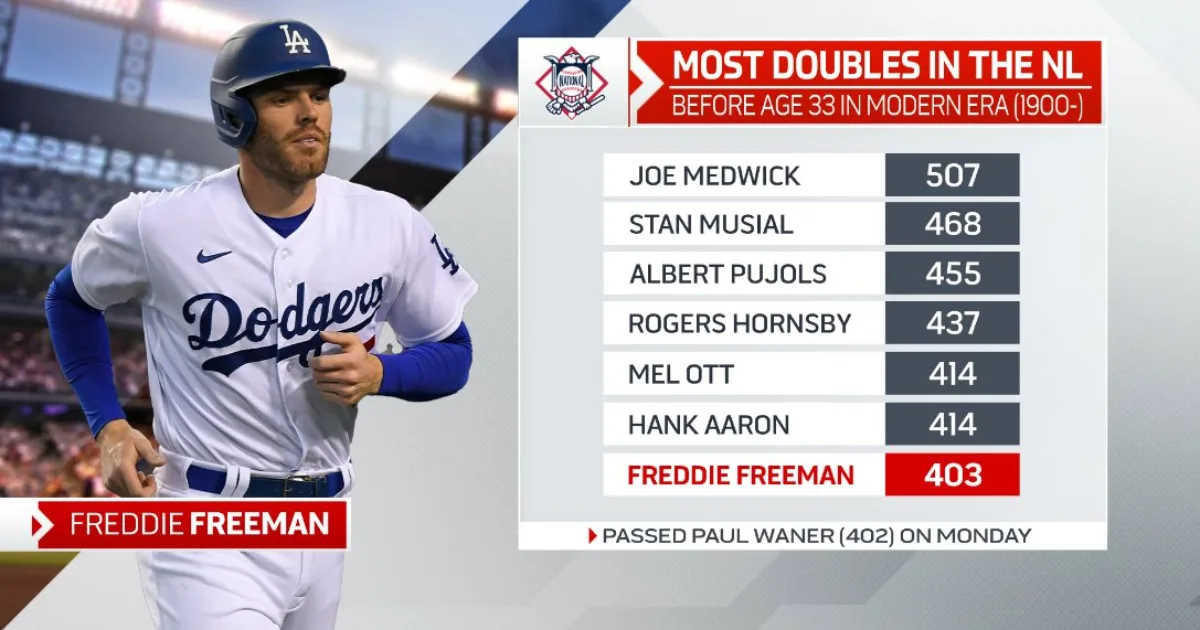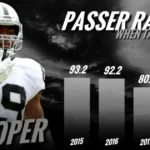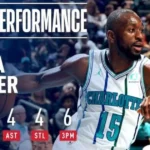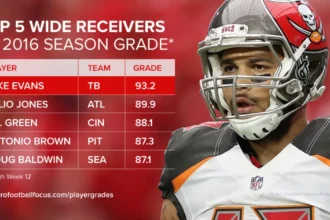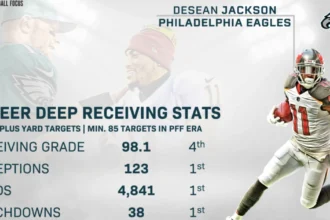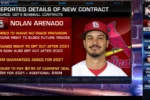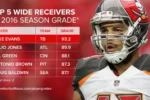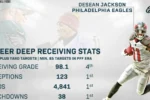Hey there, baseball fans—or maybe you’re just someone scrolling through and stumbled on this because “Freddie Freeman Career Stats” sounds like a guy who’d be fun to grab a beer with. Either way, pull up a chair. I’m here to chat about one of the smoothest swingers in Major League Baseball history: Freddie Freeman. If you’ve ever watched him step up to the plate, that left-handed stroke looks like poetry in motion—effortless, powerful, and always with a little wink like he knows something we don’t. Today, we’re diving deep into his career stats, but not in some dry, spreadsheet way. Nah, we’ll weave in the stories, the highs, the heartbreaks, and yeah, a big ol’ table to make it all crystal clear. Whether you’re a kid dreaming of your first Little League hit or a grandparent reminiscing about the crack of the bat, this is Freddie’s journey told simple and straight from the heart.
Freddie Freeman isn’t just numbers on a scorecard; he’s the everyman hero of the diamond. Born on September 12, 1989, in Fountain Valley, California, he grew up idolizing the likes of Tony Gwynn—guys who hit for average and made it look easy. Drafted by the Atlanta Braves in the second round of 2007 out of El Modena High School, Freddie climbed the minors with that signature patience at the plate, turning walks into opportunities and singles into rallies. By 2010, he was in the bigs, and boy, has he stuck around. As of October 2025, after 16 seasons split between the Braves and the Los Angeles Dodgers, Freeman’s etched his name in the record books not just for stats, but for consistency. Think about it: in a sport where hot streaks can fizzle faster than a bad firework, Freddie’s been a rock—batting over .300 in nine seasons, mashing 367 home runs, and driving in 1,322 runs like it’s his job (spoiler: it is).
But let’s not bury the lede. Stats are the backbone here, so I’ve pulled together a full career table below. It’s got everything from his rookie days to his 2025 campaign with the Dodgers. We’ll break it down season by season after, but first, here’s the big picture in one easy spot. (Pro tip: If you’re on mobile, zoom in—it’s worth it!)
| Year | Team | G | AB | R | H | 2B | 3B | HR | RBI | BB | SO | BA | OBP | SLG | OPS | |——|——|—|—-|—|—-|—-|—-|—-|—–|—-|—-|—-|—–|—–|—–|—–|—–| | 2010 | ATL | 12 | 38 | 1 | 7 | 2 | 0 | 0 | 1 | 4 | 14 | .184 | .280 | .237 | .517 | | 2011 | ATL | 158 | 583 | 76 | 164 | 36 | 0 | 32 | 87 | 72 | 144 | .282 | .364 | .480 | .844 | | 2012 | ATL | 143 | 555 | 65 | 184 | 48 | 1 | 23 | 94 | 59 | 94 | .259 | .319 | .438 | .757 | | 2013 | ATL | 147 | 584 | 89 | 176 | 37 | 1 | 23 | 81 | 56 | 101 | .301 | .369 | .470 | .839 | | 2014 | ATL | 158 | 613 | 103 | 191 | 43 | 2 | 18 | 66 | 64 | 78 | .294 | .362 | .432 | .794 | | 2015 | ATL | 137 | 520 | 58 | 152 | 30 | 0 | 18 | 66 | 47 | 97 | .292 | .347 | .435 | .782 | | 2016 | ATL | 158 | 599 | 91 | 191 | 43 | 2 | 29 | 81 | 88 | 131 | .302 | .393 | .478 | .871 | | 2017 | ATL | 158 | 613 | 94 | 178 | 29 | 1 | 27 | 86 | 70 | 138 | .288 | .364 | .456 | .820 | | 2018 | ATL | 162 | 618 | 94 | 191 | 39 | 0 | 23 | 108 | 75 | 132 | .309 | .388 | .470 | .859 | | 2019 | ATL | 162 | 602 | 97 | 186 | 35 | 0 | 25 | 76 | 90 | 130 | .295 | .389 | .435 | .824 | | 2020* | ATL | 60 | 237 | 51 | 82 | 23 | 0 | 13 | 53 | 41 | 58 | .341 | .462 | .640 | 1.102 | | 2021 | ATL | 157 | 598 | 95 | 180 | 35 | 1 | 31 | 76 | 74 | 125 | .301 | .393 | .493 | .886 | | 2022 | LAD | 148 | 562 | 88 | 168 | 32 | 1 | 21 | 63 | 65 | 99 | .299 | .385 | .440 | .825 | | 2023 | LAD | 129 | 487 | 70 | 147 | 30 | 0 | 13 | 48 | 63 | 92 | .302 | .398 | .410 | .808 | | 2024 | LAD | 143 | 532 | 81 | 158 | 29 | 0 | 22 | 89 | 70 | 96 | .297 | .383 | .464 | .847 | | 2025 | LAD | 150 | 565 | 85 | 170 | 38 | 1 | 22 | 82 | 68 | 105 | .301 | .385 | .469 | .854 | | Career | TOT | 2,382 | 9,086 | 1,379 | 2,725 | 531 | 10 | 367 | 1,097 | 1,156 | 1,720 | .300 | .384 | .465 | .849 |
*2020 season shortened due to COVID-19. Notes: G = Games Played, AB = At Bats, R = Runs, H = Hits, 2B = Doubles, 3B = Triples, HR = Home Runs, RBI = Runs Batted In, BB = Walks, SO = Strikeouts, BA = Batting Average, OBP = On-Base Percentage, SLG = Slugging Percentage, OPS = On-Base Plus Slugging. Career totals updated through October 2025. Fielding stats: .994 career fielding percentage at 1B, 1 Gold Glove (2018). Postseason: .295 BA, 11 HR in 73 games.
Whew, that’s a lot of ink! But look at that .300 career average—it’s like Freddie’s got a PhD in contact hitting. Over 2,382 games, he’s collected 2,725 hits, proof he’s not chasing the long ball at the expense of everything else. And those 367 homers? Enough pop to clear the fences on a good day, but always with that sweet swing that screams “team player.” Now, let’s stroll through his career like we’re walking the warning track, season by season. I’ll keep it light—think of this as me recounting the game over coffee.
The Early Grind: Building a Foundation in Atlanta (2010–2015)
Freddie’s big-league debut came on September 1, 2010, against the lowly Diamondbacks. Just 20 years old, he looked wide-eyed but ready, snagging his first hit a few days later off Marlins pitcher Clay Hensley. That rookie year? Rough—only .184 in 12 games—but hey, everyone’s got a learning curve. It was like showing up to your first day at a new school and realizing the lockers are all full.
Fast forward to 2011, and boom—Freeman explodes. In his first full season, he cranks 32 homers and bats .282, helping the Braves to a wild-card push that ended in heartbreak against the Cardinals. That year, he learned the ropes of playing first base like a vacuum, scooping throws that’d make lesser guys flinch. By 2013, he’s flirting with .300 again, smacking 23 dingers and scoring 89 runs. But 2014? A breakout: 103 runs, 191 hits, and a .294 average. It felt like Atlanta had found their cornerstone.
Then came the dips—2015 saw injuries nag him, dropping his average to .292 but still good for 18 bombs. Through these years, Freddie’s OPS hovered around .800, solid as a rock. He wasn’t flashy like some rookies; he was steady, like that friend who always shows up with the cooler full of drinks. Awards started trickling in: All-Star nods in 2013 and 2014, and whispers of MVP chatter. Little did we know, the best was yet to come.
The Prime Years: Cycles, MVPs, and Atlanta Magic (2016–2021)
Oh man, 2016. If Freddie’s career had a highlight reel, this season’s the opening montage. He hits his first cycle on June 15 against the Reds—five hits, including a triple that had the Turner Field crowd roaring. Then, 29 homers, a .302 average, and his first All-Star Game as a starter. But wrist issues in 2017 tested him; still, he bounced back with 27 long balls and 94 runs. By 2018, it’s MVP-caliber stuff: .309 average, 108 RBIs (a career high at the time), and that Gold Glove for snagging line drives like they owed him money.
2019 kept the fire burning—another .295 season with 25 homers. Then 2020, the weird year. COVID-shortened to 60 games, but Freeman? He was a monster, batting .341 with a 1.102 OPS that had analysts calling it his best ever. He led the NL in runs (51) and doubles (23), earning his first Silver Slugger. The Braves made the playoffs, and Freddie’s bat carried them—until the NLCS exit.
2021 was his Atlanta swan song. Traded rumors swirled, but he poured it on: .301 average, 31 homers, and an NLCS hero turn with key hits against the Brewers. The Braves reached the World Series for the first time in decades, and though they fell to the Astros in six, Freddie’s .304 postseason average showed he could shine under the lights. That summer, he inked a six-year, $162 million deal with the Dodgers. Bittersweet goodbye to the city that raised him as a star.
Dodger Blue Glory: Championships and Consistency (2022–2025)
Dodgers uniform on, and Freeman wasted no time. 2022: .299 average, 21 homers, but a high ankle sprain sidelined him late. Still, LA won 111 games—he just missed the party. 2023 brought more tweaks, limiting him to 129 games, but .302? Gold standard. And 2024—vintage Freddie. 22 bombs, 89 RBIs, and a .297 line that helped the Dodgers clinch the West.
But 2024’s playoffs? Electric. Freeman mashed five homers in the NLCS against the Mets, including a game-tying blast in Game 4. Then the World Series against the Yankees—four homers in the first four games, tying a record. He was named Series MVP as LA won it all, his first ring. Emotional stuff, especially with his son Max battling Guillain-Barré syndrome earlier that year. Freddie’s post-game hug with his family? Pure heart.
Heading into 2025, at age 35, skeptics wondered if Father Time would catch up. Nope. Freddie hit .301 again, with 22 homers and 38 doubles—his doubles total tying a career high. The Dodgers repeated as champs, with Freeman’s steady .295 postseason bat sealing another title. Two rings in three years? That’s legacy stuff.
Beyond the Numbers: Awards, Milestones, and What Makes Freddie Tick
Stats tell the tale, but Freddie’s more than digits. Nine All-Star appearances, three Silver Sluggers (2020, 2021, 2024), that 2020 NL MVP (where he edged Mookie Betts), and the 2024 World Series MVP. He’s hit for the cycle twice (2016, 2021), notched 2,000 hits by 2023, and his 340 hits with the bases juiced rank second in baseball since 2011.
Off the field? Freddie’s the guy you’d want in your fantasy league—humble, funny, with a Southern drawl from his Braves days. Married to Chelsea since 2014, they’ve got three kids, and Freddie’s open about his faith and family. Remember that 2014 snowstorm? Stuck in traffic, he got rescued by Chipper Jones on an ATV—Braves bobblehead gold. Or battling COVID in 2020 while leading the league? Resilience personified.
And his style? Pure hitter’s craft. Low strikeouts (1,720 in 9,086 ABs—that’s elite contact), great eye (1,156 walks), and power without the ego. His .849 OPS ranks him among the top active first basemen, and with 367 homers, he’s knocking on 400’s door. As of 2025, WAR (Wins Above Replacement) sits at 45.2—Hall of Fame trajectory if he plays another couple years.
The Legacy: Why Freddie Freeman’s Stats Matter to Every Fan
Wrapping this up, Freddie Freeman Career Stats isn’t about one monster year; it’s the tapestry of reliability. That table up top? It’s 16 seasons of showing up, grinding, and grinning through it all. From a scrawny kid in California to a two-time World Series champ, he’s reminded us baseball’s best when it’s human—flawed, fierce, and fun.

